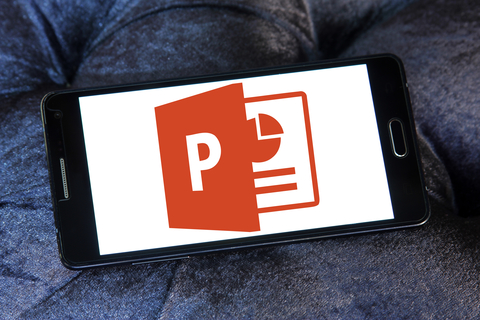
What’s the first thing that comes to mind when you hear the word “presentation?” If you’re like many business leaders, it’s probably “PowerPoint.”
The reality is, the PowerPoint slide deck has become synonymous with a presentation, to the point where the length of a talk is commonly measured by the number of slides. This thinking can lead us to make the mistake of putting the cart before the horse, or in this case, the slide deck before the message. When the PowerPoint is the primary focus, it’s easy to get into the habit of hiding behind your slides and forgetting the real purpose of your presentation: to connect with your audience.
A PowerPoint slide deck is not the presentation. You are the presentation, and you need to be the primary focus. When your goal is to communicate information and achieve results, asking them to read bullet points on a screen is not the most effective way to go. It’s your communication skills, your insights and your ability to capture and sustain their attention that will make the message resonate.
What Is the Purpose of a Slide Deck?
Let’s start with what a slide deck should not be:
• A reference displaying everything you intend to talk about.
• A teleprompter or checklist for you as the speaker.
• An all-inclusive list of everything you know about the subject.
A slide deck should be an aid to understanding for your audience, highlighting important phrases or displaying enlightening images that are quick and easy for listeners to process. They should capture the essence of what you are saying while providing insight.
There is one exception to this rule: When you are not speaking to an audience but rather sharing a large amount of data or findings in a work session. The purpose might be for a group to discuss, to come to consensus or to make a decision. In that case, your PowerPoint might be referred to as a “slidument” or a “slidedoc” because its purpose is more like a document than a visual aid to a presentation. If that’s your purpose, then use it effectively. Send it out in advance to give people a chance to digest all the material, then use the meeting as a chance to position or summarize the contents.
Signs That Your Presentation Is Really Just PowerPoint
Check for these signs of relying too heavily on a slide deck:
• You can’t give the presentation without the slide deck (are you lost if you have technical problems and can’t use the slide deck?).
• Your presentation consists only of reading aloud what’s on your slides.
• You look only at the computer screen to read the slides, and forget to look at the audience to connect and see listeners’ reactions.
Eyes on the Prize: Shifting the Focus to Your Message
When you break the habit of relying on slides to tell the whole story, your audience’s attention shifts to you as a speaker. Here are some key points to keep in mind:
• Understand your audience. When you don’t have slides telling you what to say, what will you say? The first step is to learn as much as you can about your audience. What do they already know about the topic? What questions and concerns do they have? When you take the time to understand the topics form your listeners’ perspective, you can focus your content on what your listeners need or want to know.
• Hone in on a clear & compelling message. Can you summarize what you want to communicate in one simple sentence? That’s your next step. Rather than trying to get through a litany of bullet points, focus on developing one key takeaway message. Think of yourself as the conduit between that message and your audience: everything you say and do should contribute to helping listeners remember that message after your presentation concludes.
• Engage: Shift from monologue to dialogue. When you don’t need to read off a screen, you are free to look at people’s faces! This alone can be a real breakthrough. When you look at the people you’re talking to, it becomes a conversation, even when they are not actually talking to you. You can read non-verbal cues that let you know when people are confused, engaged, or even disagree with you. Armed with this information, you can respond accordingly to increase your effectiveness.
Understanding your audience, having a compelling message and an engaging delivery are essential to a successful outcome. In fact, Chris Green (a speechwriter, author and public speaking coach in Great Britain) calls them the “Holy Trinity of Public Speaking.”
Go from Flat to 3D
To accomplish your public speaking goals, you as a speaker bring so much more to the table than a collection of bullet points. Rather than merely reciting data, you can share anecdotes and personal stories and provide insight that will drive your message home.
It’s not only what you say that counts, but how you say it. Your facial expressions, tone of voice and gestures all contribute to how compelling your presentation becomes. In fact, a Washington Post article cited a study of TEDtalks which revealed a correlation between the number of hand gestures and number of presentation views. The most-viewed presentations had nearly twice as many gestures as the least-viewed presentations!
So don’t let a PowerPoint become the focus of your next presentation. When you want results, focus on your audience, a compelling message and an engaging delivery.
Stephanie Scotti is the owner of Professionally Speaking. Email Stephanie at smscotti@professionallyspeaking.net.








